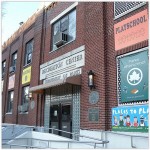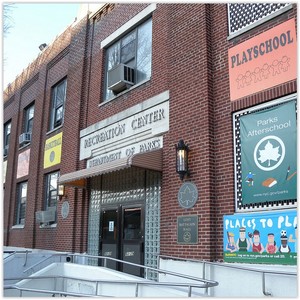 Rego Park is a middle class neighborhood in the New York City borough of Queens. Rego Park is bordered to the north by Elmhurst and Corona, the east and south by Forest Hills and the west by Middle Village. Rego Park’s boundaries include Queens Boulevard, the Long Island Expressway, Woodhaven Boulevard, and Yellowstone Boulevard.
Rego Park is a middle class neighborhood in the New York City borough of Queens. Rego Park is bordered to the north by Elmhurst and Corona, the east and south by Forest Hills and the west by Middle Village. Rego Park’s boundaries include Queens Boulevard, the Long Island Expressway, Woodhaven Boulevard, and Yellowstone Boulevard.
Rego Park is represented by Queens Community Board 6 (CB 6).
HISTORY
A swath of farmland until the early 20th century, the area that came to be called Rego Park was once populated by Dutch & German farmers who sold their produce in Manhattan. Later, the farmers were Chinese, and sold their goods exclusively to Chinatown.
Rego Park was named after the Real Good Construction Company, which began development of the area in the mid-1920s. “Rego” comes from the first two letters of the first two words of the Real Good Construction Company. The company built 525 eight-room houses costing $8,000 each, stores were built in 1926 on Queens Boulevard and 63rd Drive, and apartment buildings were built in 1927–28.
Like its neighbor, Forest Hills, Rego Park has long had a significant Jewish population, most of which have Georgian and Russian Jewish ancestors, with a number of synagogues and kosher restaurants. Cartoonist Art Spiegelman grew up in Rego Park and made it the setting for significant scenes involving his aged father in Maus, his graphic novel about the Holocaust. Many Holocaust survivors, including Spiegelman’s parents, settled there after 1945. Even as many Jews have departed for further-flung suburbs over the years, they have been replaced by Jewish immigrants from the former Soviet Union, especially from Central Asia. Though these immigrants largely trace their ethnic roots back to Bukharan Jewish culture, the effect of life in the Soviet Union on the population has led Rego Park to have a Russian feel with many signs in Russian Cyrillic. Most of the Bukharan Jewish immigrants in the neighborhood come from Uzbekistan and Tajikistan, and it is possible to find excellent, authentic Uzbek and Tajik cuisine in many Rego Park restaurants. Immigrant populations from Albania, Israel, Romania, Iran, Colombia, South Asia, China, Bulgaria and South Korea are also well represented.
Aside from the many apartment buildings, multi-family, and railroad houses which make up Rego Park, some houses in Rego Park are in the colonial and Tudor styles with slate roofs. This is especially so in an area called the Crescents, named for its semicircular shaped streets emanating in a concentric pattern from Alderton Street, between Woodhaven Boulevard and the Long Island Rail Road.
The short block of 63rd Drive between Austin Street and the railroad overpass was the scene one February morning in 1972, of a wild fire that claimed a row of stores and the neighborhood library. The blistering fire reportedly started in the second store on the block from Austin, a shoe store, and quickly spread with the gusting winds to neighboring stores, including a television repair shop, toy store, pet shop and a pioneering Indian restaurant, and finally, the library, where row upon row of oily books and wooden shelves sent flames high into the sky and up the embankment of the railroad. Firefighters scrambled to keep the windswept flames from reaching an apartment house behind the stores, a new Key Food supermarket across Austin Street, or the Shell gas station just across the drive. The library caved in before flames could damage the electrical wires lining the railroad. A new library eventually opened across the street (on the former site of the Shell gas station). After the fire, until the new library was built, the community was served by a mobile “Bookmobile” library which parked under the LIRR tracks on 63rd Drive.

